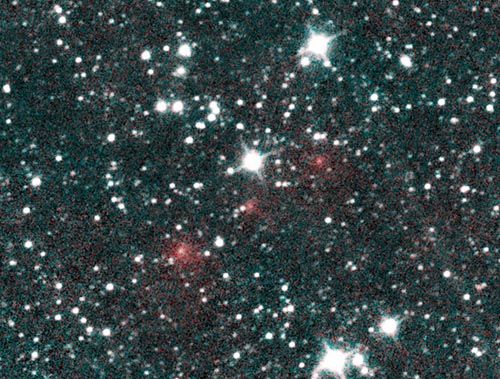A comet visiting from the most distant parts of our solar system is putting on a spectacular nighttime display.
Named Comet C/2020 F3 NEOWISE, the comet made its once-in-our-lifetimes close approach to the Sun on 3 July 2020, and will cross outside Earth’s orbit on its way back to the outer parts of the solar system by mid-August.
The comet cruised just inside Mercury’s orbit on 3 July. This very close passage by the Sun is cooking the comet’s outermost layers, causing gas and dust to erupt off the icy surface and creating a large tail of debris. And yet the comet has managed to survive this intense roasting.
Observers all over the world are racing to see the natural fireworks display before the comet speeds away into the depths of space. Even the astronauts aboard the International Space Station spotted it from their vantage point high above Earth’s atmosphere.
People wishing to catch a glimpse of the glowing comet can spot it as it swings through the inner solar system, but its nearness to the Sun creates some observing challenges.
NASA’s Near-Earth Object Wide-field Infrared Survey Explorer (NEOWISE) mission discovered the icy visitor on 27 March 2020, using its two infrared channels, which are sensitive to the heat signatures given off by the object as the Sun started to turn up the heat.
“In its discovery images, Comet NEOWISE appeared as a glowing, fuzzy dot moving across the sky even when it was still pretty far away,” said Amy Mainzer, NEOWISE principal investigator at the University of Arizona. “As soon as we saw how close it would come to the Sun, we had hopes that it would put on a good show.”

Comet C/2020 F3 NEOWISE appears as a string of fuzzy red dots in this composite of several heat-sensitive infrared images taken by NASA’s Near-Earth Object Wide-field Infrared Survey Explorer (NEOWISE) mission on March 27, 2020.
Credits: NASA/JPL-Caltech
The search for asteroids or comets that could potentially impact Earth also expands the science of these primitive solar system bodies. In this case, Comet NEOWISE will pass by Earth at a harmless distance of 103-million km while giving astronomers the opportunity to learn more about its composition and structure. The NEOWISE mission’s infrared data complements images taken at visible-light wavelengths by observers on the ground.
“From its infrared signature, we can tell that it is about 5km across, and by combining the infrared data with visible-light images, we can tell that the comet’s nucleus is covered with sooty, dark particles left over from its formation near the birth of our solar system 4,6-billion years ago,” says Joseph Masiero, NEOWISE deputy principal investigator at NASA’s Jet Propulsion Laboratory.
Featured picture: Comet NEOWISE captured on July 6, 2020, above the northeast horizon just before sunrise in Tucson.
Credits: Vishnu Reddy

